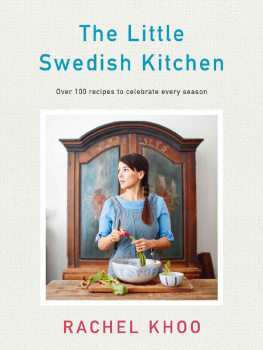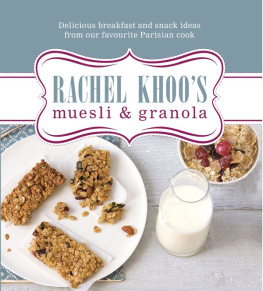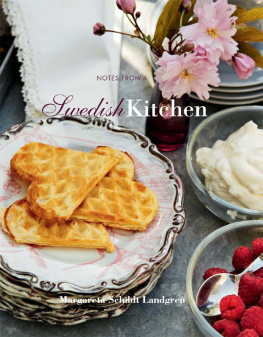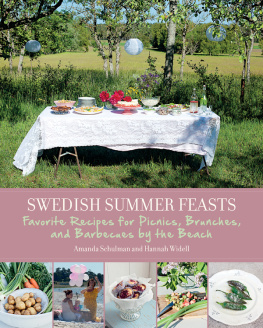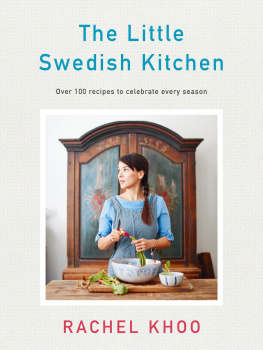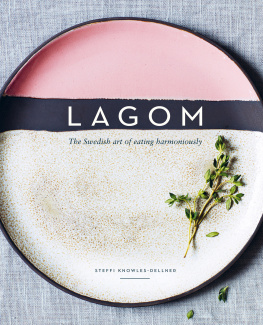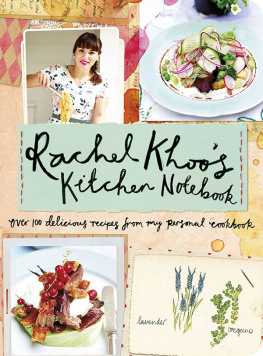



Contents
/
/
Contents
Introduction
Long before I ever had the remotest idea I would end up living in Sweden, Swedish culture made its mark on my life. I grew up watching Vicky the Viking and Astrid Lindgrens Pippi Longstocking on childrens TV; my parents would buy Ikea flat-pack furniture (I have a vintage 1970s Ikea bamboo swivel chair from them); Abba played on our radio, and later Swedish House Mafia, Robyn and Avicii; and Skype another Swedish export revolutionized my life, as I spent a lot of my adulthood living far away from friends and family.
And now I find myself in my new little kitchen, in the heart of Stockholm, Swedens capital. My love affair with Sweden was sparked, quite literally, by love. With Paris, it was love at first bite. But it was when I met my future husband eight years ago that I began to discover what would soon become my new adopted home country. Since then, I have come to know the country and its culture over many coffees and kanelbullar (cinnamon buns) first of all sitting in a bageri (bakery) dotted along one of the many cobbled streets of Stockholm, and more lately in my own little Swedish kitchen.
I soon discovered that Sweden has more to offer than flat-pack furniture, the perfect shade of Stockholm White, and fika (coffee and cake breaks). The Swedish approach to life is all about finding balance and enjoying just the right amount of all the good things or, as the Swedes put it, lagom.
Theres a Swedish saying that theres no such thing as bad weather, just bad clothes. Despite the long, dark winters, Swedes are determined to seize every opportunity to be outside, and even in the middle of winter youll see kids playing outside in sub-zero temperatures. And thats the secret of Swedish food too. Its food that makes you feel good even when its dark and gloomy outside. Food that brings a bit of sunshine into your home.
Swedes love to celebrate every season, from dark snowy winters filled with candlelight, pepparkakor (gingerbread) and glgg, to spring picnics on the archipelago, barbecues at the sommerstuga (summer cabin), and hstmys (autumn cosiness) with slow-cooked dishes that warm you up from your toes to the tips of your fingers. The weather might be slightly chilly, but you can make the most of the sunshine with a fire, which not only keeps you warm, but also offers the best way to grill some freshly caught perch: the perfect ingredient for a Swedish-style taco. The short but deliciously sweet Swedish summer offers glorious midsommar celebrations, and the chance to make the most of the annual glut of lingonberries, blueberries, cloudberries, raspberries and wild strawberries a delicious base for both savoury and sweet recipes. Finally, the end of summer/beginning of autumn brings crayfish parties, followed by foraging for karljohansvamp (Swedish porcini), and hearty game recipes.

One might think that a short growing season would be a disadvantage for most chefs and home cooks. I certainly miss the open fresh-food markets that I was accustomed to in Paris and London. But a resourcefulness and determination to make the most of whats available has become intrinsic to the Swedish approach to cooking. Cooks and chefs around the country have to rely on their cooking experience and imagination to make the most of what the season has to offer. Obviously now its possible to get more or less anything your heart desires, but this limitation has influenced the history of Swedish food, and can be seen in the wide variety of traditional preserving methods used to this day, such as pickling, smoking and brining.
I will be the first to admit that Im no expert in Swedish cooking (neither do I think Im an expert in French cooking theres just so much still left to learn). However, over the past seven years I have experienced a wide range of Swedish food, from Michelin-starred restaurants to humble home cooking.
Back in the summer of 2012, after my whole life was turned upside down with the success of The Little Paris Kitchen (which brought with it an intense whirlwind of interviews and PR opportunities), I decided that I needed to get back in the kitchen. But it was not any old kitchen I decided to get back to. Through a few connections I got in touch with Magnus Nilsson, chef of Fviken (one of the most renowned restaurants in the world, located in the Swedish wilderness and which many of the high-end diners access by helicopter) to ask whether it would be possible to do an unpaid stage at his restaurant. So that summer I embarked on a culinary expedition. I dont think Ive ever been so nervous (not even when doing live TV on the BBC to millions of viewers did I have the same amount of butterflies). I actually felt sick with nerves when I boarded the small plane from Stockholm to re. And while sitting at the local train station, after the flight and a train ride, waiting to be picked up for the final car journey (Fviken is literally in the middle of nowhere!), I pondered why on earth I was putting myself through it. But sometimes I have these crazy whims. I had worked in professional kitchens before, but nothing at this level. This time, the fear of the unknown really scared me.
Despite it only being for two weeks, it was an intense affair. I thought I would end up washing dishes for the majority of the time (which I did do occasionally, as well as scrubbing the loos), but no, I was sent to fish for local brown trout, to pick meadowsweet and to gather twigs, leaves and herbs. There was a disaster: I messed up the reindeer-blood tartlets appetizer oh, how I wished the earth could have swallowed me up. Pin-drop silence is ten times worse than someone shouting at you. But there were also many highlights, such as observing how beautifully and quietly the different chefs worked together, producing course after course meticulously put together, almost as if theyd been choreographed in a kitchen performance of Swan Lake. It all finished with us cooking up 200 moose kebabs at a game fair while listening to one of Swedens most popular country bands.
Not only was this experience formative for me in terms of discovering what was happening in the Nordic restaurant scene, but it also planted a seed of thought on how to cook creatively with limited produce. It takes some confidence to be able to cook with few ingredients. Swedish cooking tends to use several core key ingredients (more about that in the pantry section ), rather like the major keys on the piano. These keys can be used in numerous different ways to create a harmonious melody; the chords may be familiar, but the melody is different each time. Despite the recent international recognition of Nordic cuisine as championed by its top chefs, Husmanskost (literally housemans food, or traditional home-cooked food) is the real basis of Swedish cooking. It is food that originates from the countryside, much like the Italian

